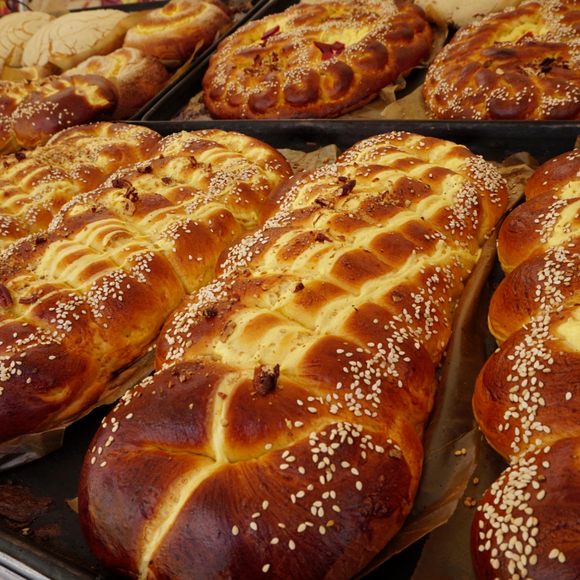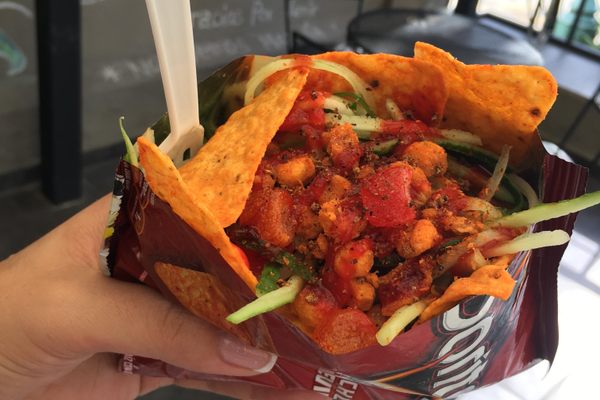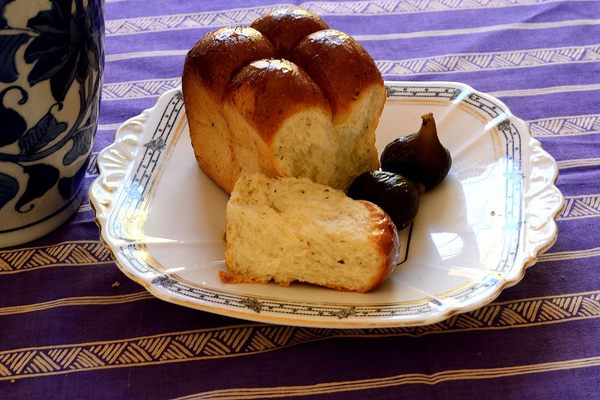Prepared Foods
Pan de Pulque
This shape-shifting bread has kept its traditional name, but continued to reinvent itself with changing times.
A stroll down the streets of Totolac, a village in the state of Tlaxcala, Mexico, is an olfactory treat on Wednesdays, when the 200 bakers in the town put their loaves of pan de pulque in the oven, filling the entire village with the warmth and fragrance of fresh-baked bread. Traditional pan de pulque should use pulque, an alcoholic beverage made from the fermented sap of the agave plant, as a natural leavener for the bread. The bakers also call their loaves pan de feria (fair bread) or pan de fiesta (festival bread), and, because the bread is loaded onto mules or donkeys and carried to neighboring towns and states, it is sometimes known as pan de burro (donkey bread). Sometimes, the loaves are wrapped in banana or white zapote leaves, which keeps them from drying out and adds a mild leafy essence to the bread.
Pan de pulque was being made in Tlaxcala long before the Spanish Conquest, with pulque, cornmeal, and honey. But a closer approximation of the bread as it exists today came with the Franciscan friars who taught Tlaxcalans to bake bread with wheat. Tlaxcalans had made a pact with the Spanish to oust the Aztecs, an alliance that earned them rights to grow their own wheat. It is believed that bakers in Tlaxcala began adding pulque to the ritual bread of the Franciscans as a secret offering to their own gods, disguised as an oblation to Christ. Pulque bread became a mealtime staple, dipped into mole, and eaten with beans and cheese. While the ingredients may have changed somewhat to reflect more conventional bread-baking, the pulque, made commonly with the maguey variety of agave, remained the defining feature of this bread.
The tradition of drinking pulque, which must be consumed soon after it’s made (it spoils quickly), declined with the conquistadors, and with the rising popularity of beer, although it has been enjoying a slow renaissance in some Mexican bars. Likewise for the pan, in the past, the bakers of Totolac would use pulque in their bread, but these days, pan de pulque is made like any traditional bread, with flour, shortening, eggs, piloncillo (unrefined cane sugar), and yeast. Few Totolac bakers still add pulque to their dough. The name has stuck on, but its signature ingredient has not.
Today, pan de fiesta is popular during festivities. It is typically rolled out in a braid, decorated with candied fruit or sesame seeds, or prepared as a round bun, topped with sugar. Pan de pulque, made with actual pulque has acquired the rarefied status of artisanal foods, made by bakers with traditional wisdom of Tlaxcalan cuisine. Nevertheless, the legend of the bread carries on, and its many names and forms of enjoyment ensure its steadfast place on the Mexican table.
Written By
 Rohini Chaki
Rohini Chaki
















